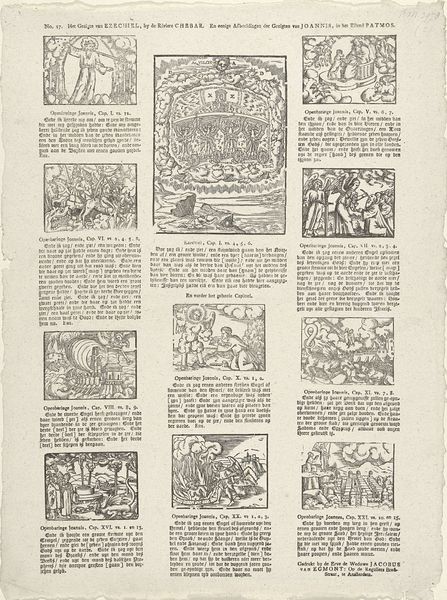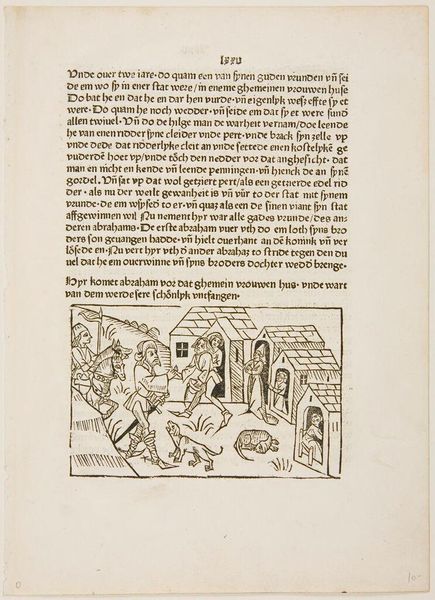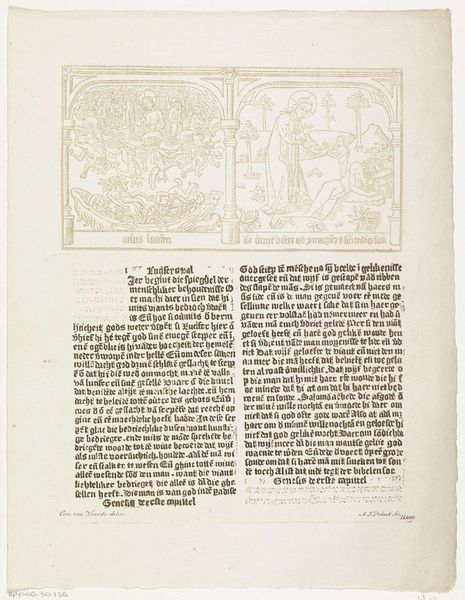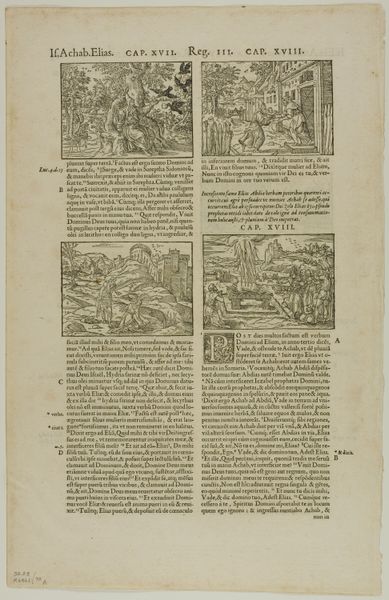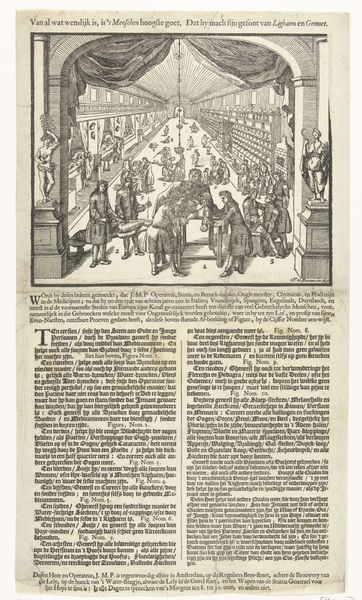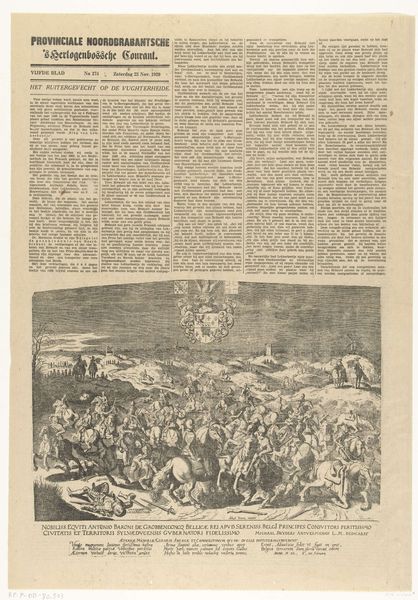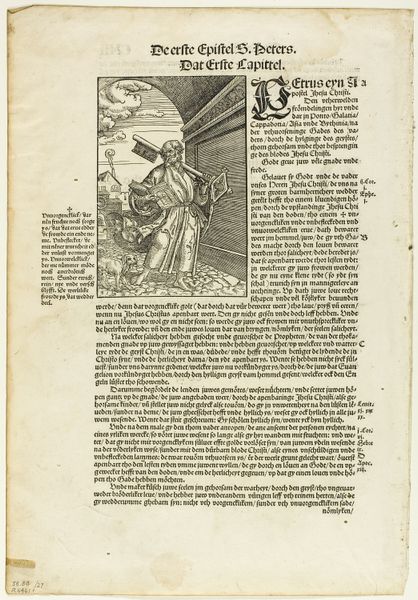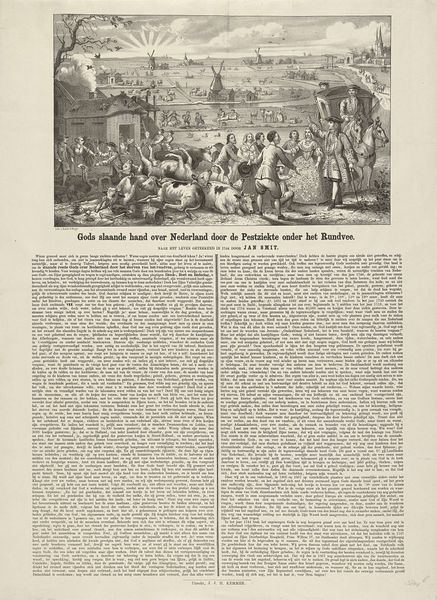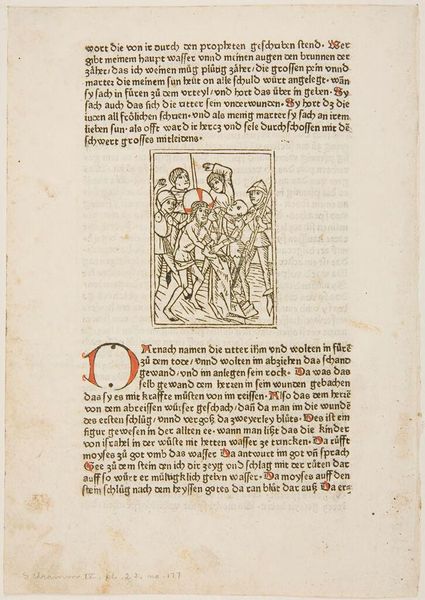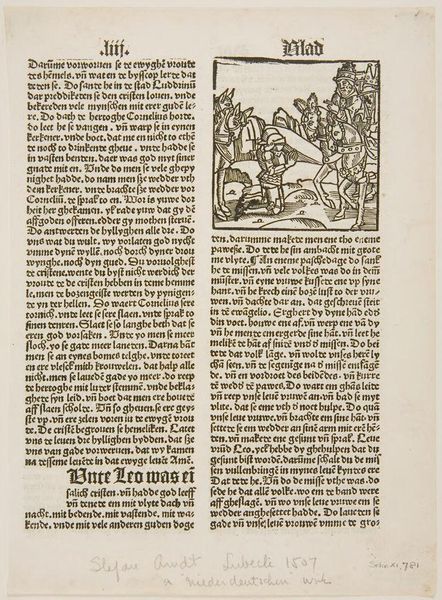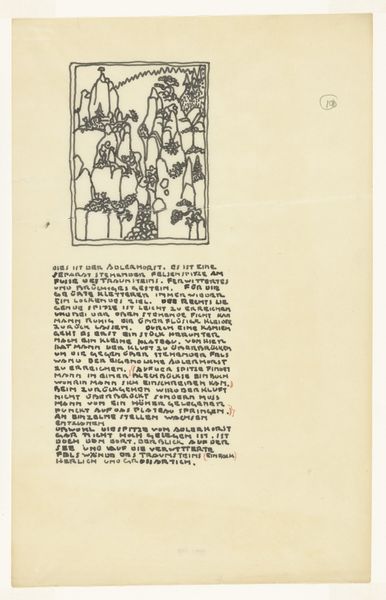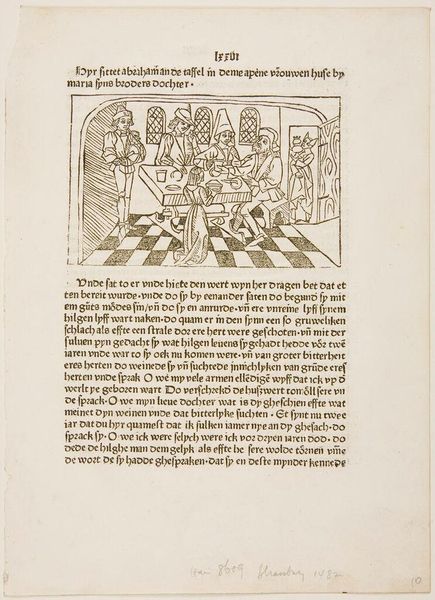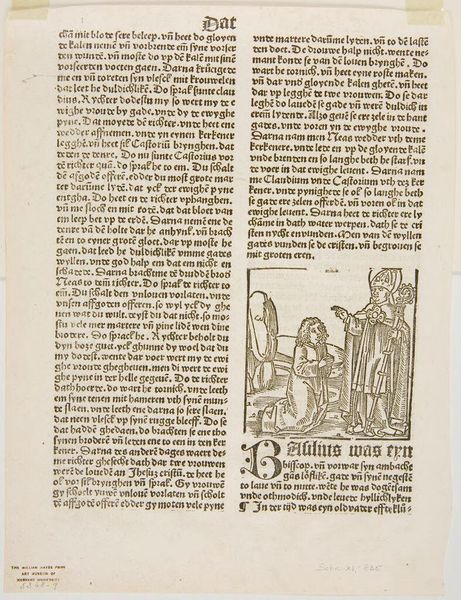
Dimensions: height 332 mm, width 229 mm
Copyright: Rijks Museum: Open Domain
Editor: This is quite a striking print – "The Fall of Lucifer and the Creation of Eve," made in 1762 by Cornelis van Noorde. It looks like an engraving. I'm really drawn to the contrast between the chaotic, swirling scene of Lucifer’s fall and the serene, almost formal depiction of Eve’s creation. What do you see in this piece, especially considering its historical context? Curator: The juxtaposition you've noticed is crucial. We see here an instance of religious history being employed to promote a specific understanding of good and evil within 18th-century Dutch society. The print visualizes two pivotal moments: the expulsion of Lucifer, representing disobedience and chaos, and the creation of Eve, intended as a symbol of divine creation and order. Note the prominent text beneath each image. Editor: I see it now – how are these visual representations used in a public sense, like in terms of political messaging, for example? Curator: Consider the rising prominence of secular thought during this era. By juxtaposing Lucifer's fall with the creation of Eve, the print subtly reinforces traditional religious doctrines while also implying the social roles of men and women and questioning potential social upheaval by alluding to Lucifer. This kind of imagery would’ve circulated widely, influencing popular conceptions of morality and order. Are you noticing how the formal composition serves to underscore these didactic purposes? Editor: Yes, I'm noticing that the very act of arranging these events side-by-side conveys a message beyond the individual stories themselves, influencing the social views of men and women! The neat text at the bottom drives the historical context home as well. Curator: Exactly! It’s a powerful example of how art could reinforce existing power structures by visually encoding accepted social norms and reinforcing religious doctrine. It asks us to think about the museum's role in preserving, studying, and interpreting artwork as it promotes an active discussion on ethical and historical narratives. Editor: I never thought about it that way – seeing art not just as art but as an active player in historical and societal messaging. It really adds another layer to understanding its cultural significance! Curator: Indeed! It's all about understanding how power operates and has operated through art!
Comments
No comments
Be the first to comment and join the conversation on the ultimate creative platform.
